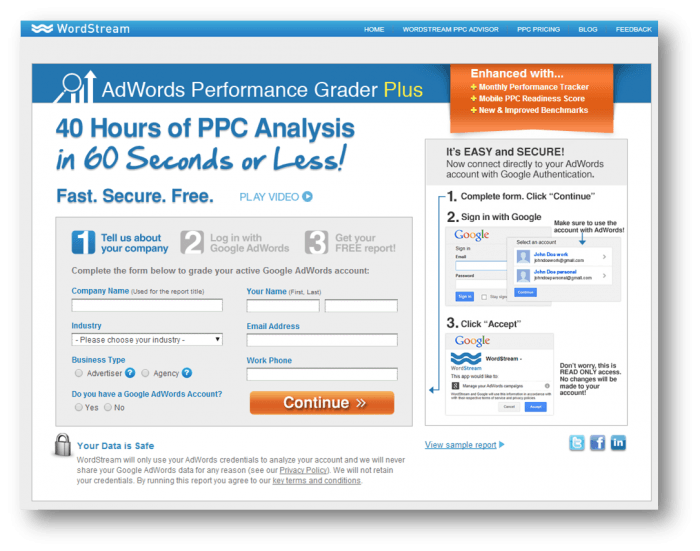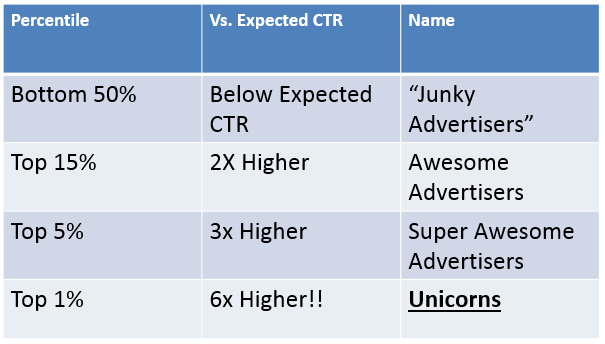In every marketing channel – whether it’s paid search, content marketing, email, or any other channel you’re using to drive leads and sales – the key to success is standing out from the noise. And there’s a lot of noise!
Americans now consume 10 hours of content per day, on average, according to Nielsen. There’s an unbelievable amount of content being posted to the web: 216,000 photos shared on Instagram, 278,000 tweets posted, 72 hours of video uploaded to YouTube, and 2 million Google searches performed every minute.
It’s incredibly daunting for marketers. How can you break through this constant mass of stuff and not only get in front of, but truly engage your potential customers? In this article, I’ll explain a three-step process for finding and delivering what your customers are looking for.
Step 1: Figure out what they really want.
In the early days of online marketing, it was all about figuring out which keywords people used for search and trying to appear there. The organic search landscape was far less competitive, it was easily gamed, and there was little to no consideration for searcher intent.
You can probably figure out some of the keywords people use to find products or services like yours, but do you understand which queries show the intent to purchase? Or an intent to discover new information? Or an intent to comparison shop? In other words, are you giving your prospects the right content depending on where they are in the funnel?
Our friend and AdWords expert Perry Marshall calls this understanding the Happy Juice Principle. “Happy Juice” is an experience that provides real value to your audience, and it should be in all of your marketing messaging.
How do you learn more about what your audience really wants? Tools and data you already have at your disposal are great – analytics, social feedback, email correspondence and customer reviews, to name a few. However, you can dig a lot deeper using simple online surveys and even in-store or phone surveys.
You really need to understand these things before you can even begin to map out how your business uses content marketing and communication to meet audience needs and intent:
- What is the problem?
- What is preventing the person from fixing it themselves?
- How does your business provide the best solution?
Once you understand the answers to these questions, they will drive all of your creative messaging going forward.
Step 2: Entice them with emotional ads and landing pages.
I’m going to tell you a secret a lot of PPC marketers don’t want you to know (but you probably suspect). Ready for it? Most ads suck.
It’s true. In a recent analysis of nearly 100,000 AdWords accounts, representing $3 billion in annualized spend, we found that the average click-through rate of ads in the first position is between 5 and 6%. By the third position, it’s under 3%, and by the time you reach the fifth position, you’re looking at just under 1.5%.
Sadly, most advertisers are happy to aim for average. But why settle? Some people are blowing the average out of the water. The top 15% of ads perform two times better than average and the top 5% three times higher. The top 1% of ads – those we call Unicorns – get six times as many clicks!
This isn’t dumb luck. An analysis of those Unicorn ads is incredibly enlightening, as they all have things in common, which makes those results replicable and achievable for any business willing to do the work. For example, ads with extremely high, double-digit click-through rates tends to be emotional – they focus on big-picture benefits rather than nitty-gritty product features. Take a look at the examples below, for a mountain climbing school. Instead of telling you boring details like hours and prices, they appeal to emotions, and get great results:
If you want to really connect with your visitors and truly blow their minds, you can’t just follow conventional best practices and hope for the average.
Step 3: Give them a truly outstanding offer.
Classic conversion rate optimization wisdom will tell you to test different button colors and headlines, mess around with font size, spacing, and so on to try to get more conversions from your landing pages. But tests like these do nothing to address the burning desires of your visitor. You may see small gains, but they won’t have impact or be lasting.
To really increase your conversion rates, you need an irresistibly compelling offer – something that your audience truly wants. When you’re offering that, they won’t care what color the button is!
Say you’re a software brand offering a free trial. Or, maybe you’re an accountant offering a free consultation. Congratulations, you’re offering exactly the same thing as all of your competitors! It’s not imaginative or creative … and it doesn’t address your visitor’s intent.
We saw huge gains in conversion rate on our landing page when we critically examined our offer. We sell software, but one day we realized that dropping them into a free trial and leaving them to stumble around in an unfamiliar platform for a few weeks wasn’t the best we could do.
Instead, we changed our primary offer completely, to a free tool. The tool provides a free AdWords account evaluation – in other words, something very tangible and high-value that visitors could use to their benefit right away. There’s no learning curve to using a free tool, so we immediately started seeing more conversions compared to the free trial offer. Leads went through the roof.
 Of course, it’s not easy to come up with an offer that addresses the true needs of your audience. But it’s definitely worth it if you want to blow your visitors’ minds. What are you doing to ensure you deliver what your audience really wants?
Of course, it’s not easy to come up with an offer that addresses the true needs of your audience. But it’s definitely worth it if you want to blow your visitors’ minds. What are you doing to ensure you deliver what your audience really wants?
About the author:
Larry Kim founded WordStream in 2007. He bootstrapped the company by providing internet consulting services while funding/managing a team of engineers and marketers to develop and sell software for search engine marketing automation. Today he serves as WordStream’s Chief Technology Officer and is a contributor to both the product team and marketing teams. You can follow Larry on Twitter and Google+.



